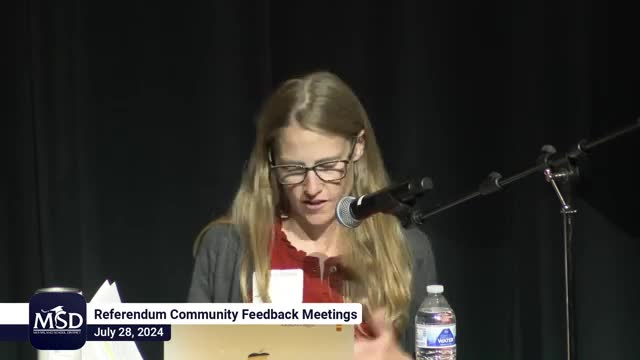School District Faces Teacher Shortage Amid Budget Crisis
July 28, 2024 | McFarland School District, School Districts, Wisconsin

This article was created by AI summarizing key points discussed. AI makes mistakes, so for full details and context, please refer to the video of the full meeting. Please report any errors so we can fix them. Report an error »

During a recent McFarland School District meeting, officials addressed significant budgetary challenges, including a projected $2.4 million deficit for the upcoming school year. The district's financial situation has prompted discussions about the need for increased funding, particularly in light of a failed referendum aimed at improving operational costs, including staff salaries.
The district's administration, which is intentionally kept smaller than average, consists of 13 positions, including four principals and five assistant principals. This lean structure has resulted in staff members taking on multiple roles, as there are no dedicated directors for human resources, communications, or technology. Many of these staff members have voluntarily accepted pay freezes or cuts to their raises in response to the financial constraints.
Caitlin Howan, a compensation consultant and parent in the district, highlighted the broader implications of the teacher shortage affecting not only McFarland but also schools nationwide. She emphasized the importance of competitive salaries to attract and retain quality educators, noting that McFarland is the last district in Dane County without a successful referendum to support operating costs. As neighboring districts have successfully passed referendums, they are poised to increase teacher pay, further widening the gap for McFarland.
Howan explained that the current entry pay rate for new teachers in McFarland is slightly below average compared to competing districts, a situation that is likely to worsen as those districts implement pay increases. She underscored the financial and morale costs associated with high turnover rates, arguing that retaining existing staff is more fiscally responsible than recruiting new hires.
The meeting concluded with a call for community support to address these pressing financial issues, as the district seeks to ensure that it can continue to provide quality education and maintain a stable workforce. The discussions underscored the critical need for a sustainable funding model that keeps pace with inflation and the rising costs of education.
The district's administration, which is intentionally kept smaller than average, consists of 13 positions, including four principals and five assistant principals. This lean structure has resulted in staff members taking on multiple roles, as there are no dedicated directors for human resources, communications, or technology. Many of these staff members have voluntarily accepted pay freezes or cuts to their raises in response to the financial constraints.
Caitlin Howan, a compensation consultant and parent in the district, highlighted the broader implications of the teacher shortage affecting not only McFarland but also schools nationwide. She emphasized the importance of competitive salaries to attract and retain quality educators, noting that McFarland is the last district in Dane County without a successful referendum to support operating costs. As neighboring districts have successfully passed referendums, they are poised to increase teacher pay, further widening the gap for McFarland.
Howan explained that the current entry pay rate for new teachers in McFarland is slightly below average compared to competing districts, a situation that is likely to worsen as those districts implement pay increases. She underscored the financial and morale costs associated with high turnover rates, arguing that retaining existing staff is more fiscally responsible than recruiting new hires.
The meeting concluded with a call for community support to address these pressing financial issues, as the district seeks to ensure that it can continue to provide quality education and maintain a stable workforce. The discussions underscored the critical need for a sustainable funding model that keeps pace with inflation and the rising costs of education.
View full meeting
This article is based on a recent meeting—watch the full video and explore the complete transcript for deeper insights into the discussion.
View full meeting
